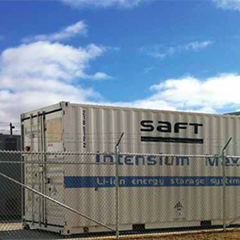Michael Lippert, Saft’s marketing manager for energy storage, describes how experience of managing megawatt-scale Li-ion energy storage systems (ESSs) in the field has led to the development of best practice in managing ESSs for large solar (and wind) plants.
Photovoltaic (PV) solar and wind power plants are characterised by high variability and limited predictability caused by changing weather conditions. Furthermore, high concentrations of wind and solar plants can cause voltage issues and congestion in the feeders and substations at grid connection points. In island grids and poorly interconnected grids, solar and wind generation lack the inertia of conventional power generation plants.
Energy storage has a key role to play in mitigating against these issues by performing a number of functions: ramp rate control, smoothing, shaping, peak shaving and frequency regulation. Each of these functions leads to different charge and discharge profiles and requires careful consideration when designing and assembling a dedicated ESS for a particular installation.
Ramp rate control works by storing or releasing energy when there are sudden changes in output. Smoothing of peaks and troughs in power output helps keep production within the given forecast window and compensates for short-term power sags.
In these applications the ESS limits ramp rates to acceptable levels, and for a typical PV or wind farm will have an average depth of discharge (DOD) of around only five percent as it charges and discharges to control a fluctuating output.















